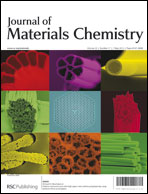Small-scale, one-dimensional structures are of great interest for their applicability in fields as diverse as medicine, catalysis, microelectronics and chemical analysis. Such structures include tubes, fibres/wires, and other extended linear forms. One popular approach to fabricating 1D structures is to form them inside a template and then remove the template, typically by selective chemical etching. In this work, microstructured fibres (MSFs) were used as a template to generate tubes, wires and porous monoliths from poly(divinylbenzene) or poly(butyl acrylate-co-butanediol diacrylate). MSFs are designed and marketed as photonic waveguides, and consist of an array of parallel channels fashioned in silica. The MSF manufacturing process typically involves stacking a number of tubes and rods in a preformed array followed by heating and drawing to a thin fibre. This process allows tight control over the channel size and shape, and as such these parameters are highly consistent between channels and between MSFs. Consequently, the 1D structures formed from these template channels share their low polydispersity, as well as their other characteristics such as ultrahigh aspect ratio and axial alignment.

You have access to this article
 Please wait while we load your content...
Something went wrong. Try again?
Please wait while we load your content...
Something went wrong. Try again?


 Please wait while we load your content...
Please wait while we load your content...